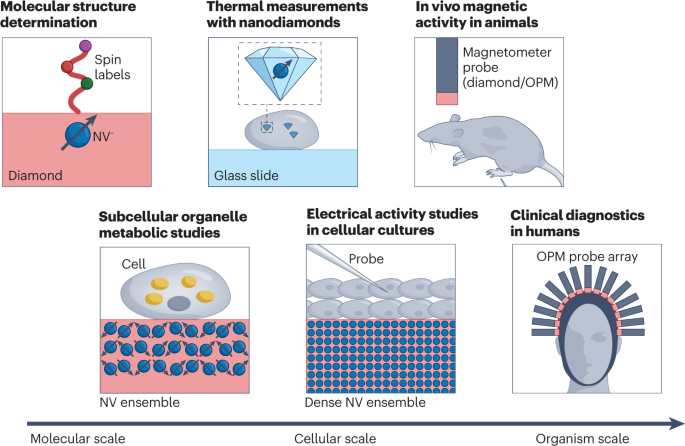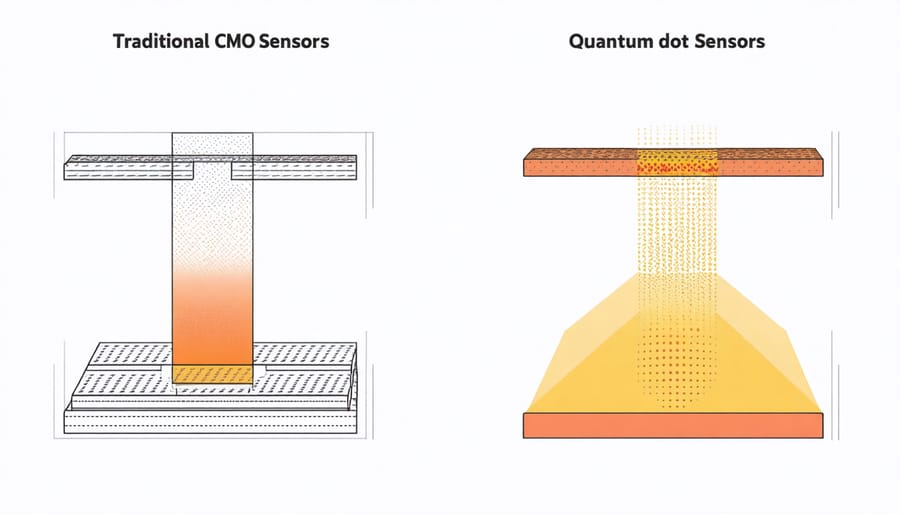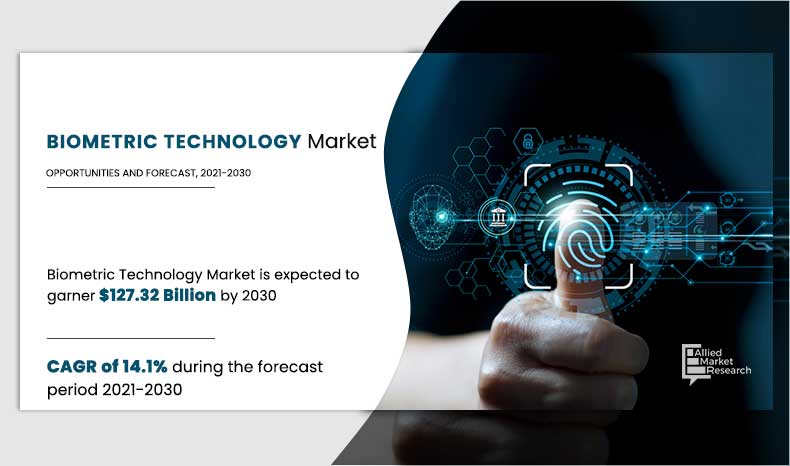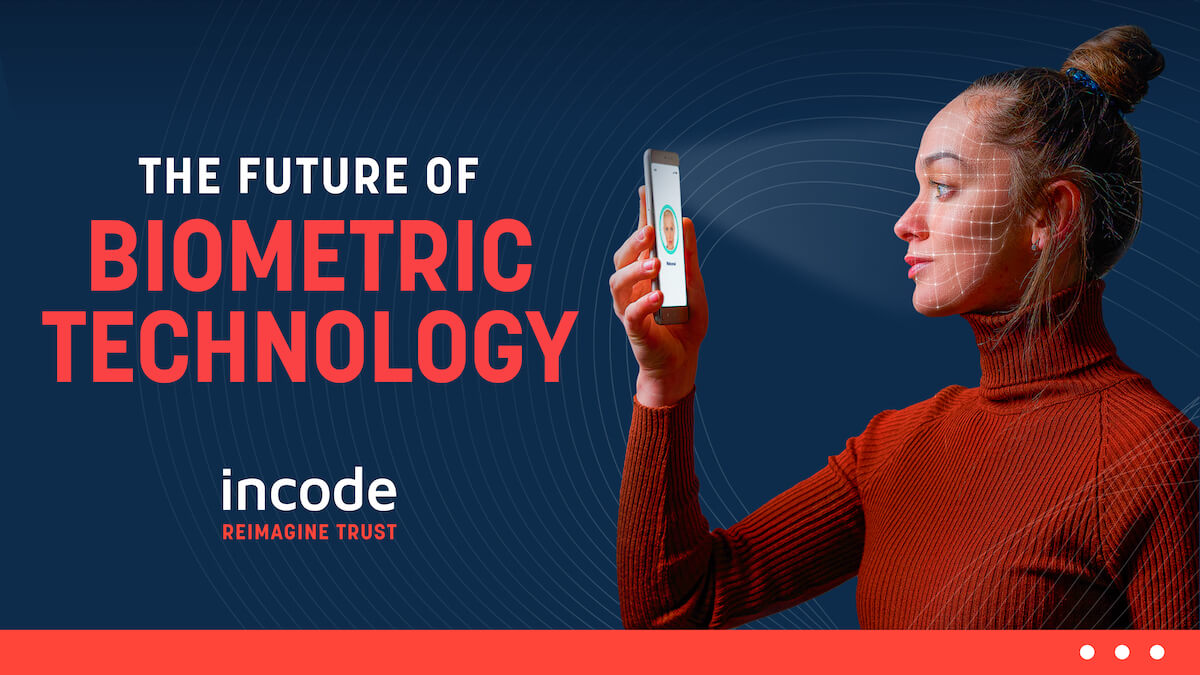Overview of Quantum Sensing in Bio‐Tracking

Quantum sensing technologies are beginning to transform the way we capture biological signals and track human biometrics. These sensors use quantum phenomena to achieve high sensitivity in measuring physical quantities such as magnetic fields, time, and temperature, offering unprecedented spatial resolution and precision. In particular, emerging quantum magnetometers and diamond NV (nitrogen–vacancy) center sensors are poised to revolutionize consumer bio‐tracking by enabling ultra‐precise detection of minute magnetic fields generated by biological processes, such as neuronal activity and cellular metabolic changes[1].
Quantum Magnetometers and Diamond NV Centers

Quantum magnetometers, including optically pumped magnetometers and devices based on diamond NV centers, offer dramatic improvements over traditional sensor technology. Diamond NV centers are defects in the diamond lattice that, when illuminated with light, can prepare and read out quantum spin states. These sensors are capable of measuring magnetic fields with responses on the order of 1 nT/Hz½, equivalent to detecting the subtle magnetic signature of a single electron or the firing of a neuron[6] The long coherence times of NV centers, which can extend to milliseconds at room temperature, further support precise measurements over extended periods, making them suitable for bio‐tracking applications in realistic settings. Recent advancements have even improved the efficiency of NV center magnetometry by employing innovative algorithms that reduce measurement times dramatically, potentially turning months-long experiments into days-long processes[9].
Advantages over Conventional CMOS Sensors
Current imaging and bio‐tracking systems often rely on CMOS sensors, which, despite their widespread use in mobile devices, have limitations in low-light performance and resolution. CMOS sensors operate via traditional photoelectric effects where light is filtered and converted to electrical signals, but they are prone to issues such as pixel saturation in bright conditions and noise under low illumination[3] In contrast, quantum sensors based on diamond NV centers or quantum dots can achieve not only higher sensitivity but also a faster response time and enhanced spatial resolution. For example, quantum-dot-based photodetectors may lead to thinner and more efficient imaging systems that can operate effectively across both visible and infrared wavelengths, an aspect where CMOS technology struggles particularly in the infrared spectrum[3] This elevated performance is crucial in consumer bio‐tracking, where non-invasive, high-resolution monitoring of biological signals—ranging from subtle magnetic fluctuations to fingerprint pattern details—is highly desirable.
Market Trends and Commercialization Timelines
Market forecasts indicate strong growth in quantum sensing technologies over the coming decades. According to industry research, the quantum sensor market is expected to achieve revenues in the billions by the mid-2040s, driven in part by applications in defense, medical imaging, and consumer electronics[2] In parallel, efforts are underway to integrate biometrics into everyday devices. For instance, companies such as Precise Biometrics have recently signed license agreements to integrate advanced fingerprint verification algorithms into mobile phones and access control systems, aiming for commercialization during 2024 and beyond[11] These steps demonstrate the accelerating trend toward adopting quantum sensor technologies as part of mainstream consumer electronics. Also, government and private sector investments continue to drive miniaturization and performance improvements, which will likely lead to quantum sensors becoming a competitive alternative to traditional methods in the near future.
Potential for Ultra‐Precise Biometrics
The integration of quantum magnetometers and diamond NV center sensors into biometric systems holds the promise of achieving unprecedented accuracy in personal identification and health monitoring. With the ability to detect the extremely weak magnetic fields emitted by neural and cellular processes, quantum-based biometrics could offer non-invasive ways of monitoring health status and identifying individuals uniquely based on subtle physiological signals. This approach is expected to complement and eventually outperform conventional biometric methods such as fingerprint or facial recognition, particularly as contactless and highly secure systems are becoming increasingly important in our daily lives[8] Moreover, the rapid advances in readout technology—as highlighted by recent software algorithms that enhance the performance of NV center sensors—underscore the potential for these devices to transition from research laboratories to commercial consumer products in the coming years[9]
Future Outlook and Integration Challenges
Despite the exciting potential for revolutionizing consumer bio‐tracking, several challenges remain. Ensuring the long-term stability and uniformity of quantum sensors, especially when scaled for consumer applications, is a significant hurdle. The manufacturing complexities related to functionalizing diamond NV centers and integrating them with compact electronics need to be addressed to achieve the low-cost, high-volume production required for consumer markets. At the same time, the competitive landscape is witnessing rapid advancements in both quantum and traditional sensor technologies, which means that quantum sensors must continuously improve in efficiency, durability, and ease of use to gain widespread adoption[7] Looking ahead, industry forecasts suggest that as technical challenges are overcome, the integration of ultra-sensitive quantum sensors into consumer products will not only enhance performance but also provide new functionalities that are impossible with today's CMOS-based systems[10] With ongoing investments and research, the commercialization timeline for such technologies is expected to accelerate, reshaping consumer electronics and bio-tracking applications in the near future.
Get more accurate answers with Super Pandi, upload files, personalized discovery feed, save searches and contribute to the PandiPedia.
Let's look at alternatives:
- Modify the query.
- Start a new thread.
- Remove sources (if manually added).





